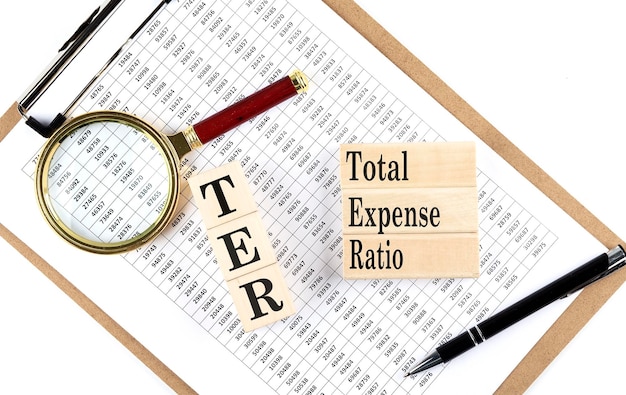Capital Gains Tax 2025: How New Regulations Impact US Investors

The new tax regulations taking effect in January 2025 could significantly alter how capital gains taxes are calculated and impact US investors, potentially leading to higher tax liabilities depending on income levels and investment strategies.
Understanding the implications of the upcoming tax regulation changes is crucial for US investors. How will the new tax regulations taking effect January 2025 affect capital gains taxes for US investors? Let’s delve into the key aspects and potential impacts.
Understanding Capital Gains Tax Basics
Capital gains tax is a levy on the profit an investor makes when selling an asset, such as stocks, bonds, or real estate. The rate at which these gains are taxed depends on several factors, including the holding period of the asset and the investor’s income level. Understanding these basics is essential to prepare for the changes coming in 2025.
Short-Term vs. Long-Term Capital Gains
Capital gains are generally classified as either short-term or long-term, based on how long the asset was held. Short-term capital gains typically apply to assets held for one year or less, while long-term capital gains apply to those held for more than one year. The tax rates for these two categories can differ significantly.
Current Capital Gains Tax Rates
As of today’s date, long-term capital gains tax rates in the US are typically 0%, 15%, or 20%, depending on the taxpayer’s income. Short-term capital gains are taxed at the individual’s ordinary income tax rate, which can be much higher. Understanding these current rates provides a baseline for assessing the impact of the new regulations.

Key takeaways for investors:
- Holding period is crucial in determining the applicable tax rate.
- Income level plays a significant role in determining the long-term capital gains tax rate.
- Short-term gains are taxed at a higher rate than long-term gains.
In summary, having a clear understanding of the basics of capital gains tax, including the differentiation between short-term and long-term gains, and the current tax rates, is crucial for US investors to effectively navigate the financial landscape and prepare for any changes in tax regulations.
Overview of New Tax Regulations for 2025
The tax landscape is set to change significantly in 2025, with new regulations poised to impact various aspects of taxation. These changes could affect how capital gains are taxed for many US investors. Let’s examine the key points of these upcoming regulations.
Sunset of the Tax Cuts and Jobs Act (TCJA)
A major factor driving the upcoming changes is the sunset of many provisions in the Tax Cuts and Jobs Act (TCJA) of 2017. This act brought about significant tax reforms, but many of its individual tax provisions are scheduled to expire at the end of 2025. The sunset of these provisions will revert the tax code to what it was before the TCJA.
Potential Changes to Tax Brackets and Rates
With the sunset of the TCJA, individual income tax brackets and rates are likely to revert to their pre-2018 levels. This means that many taxpayers could find themselves in different tax brackets, which could impact their overall tax liability. Higher income individuals could face higher marginal tax rates.
- Reversion to pre-2018 tax brackets and rates.
- Potential increase in marginal tax rates for higher-income earners.
- Impact on the taxation of investment income, including capital gains.
The expiration of the Tax Cuts and Jobs Act (TCJA) of 2017 and the resulting changes to tax brackets and rates in 2025 could significantly impact US investors, potentially leading to higher capital gains taxes for many individuals.
How New Regulations Impact Capital Gains Tax Rates
The shifting tax landscape in 2025 has direct implications for capital gains tax rates. With the sunset of certain provisions and potential adjustments to tax brackets, investors need to anticipate how these changes will affect the taxation of their investment gains. Understanding these direct impacts is paramount for strategic financial planning.
Likely Adjustments to Long-Term Capital Gains Rates
One of the most significant changes could be adjustments to the long-term capital gains tax rates. As mentioned, these rates are currently 0%, 15%, or 20%, depending on the taxpayer’s income. However, with the sunset of the TCJA, these rates could be subject to change, potentially increasing for some income brackets.
Impact on High-Income Earners
High-income earners are likely to be the most affected by changes to capital gains tax rates. If tax brackets revert to their pre-2018 levels, high-income individuals could face higher marginal tax rates, which would then also apply to their long-term capital gains. This could mean paying a larger percentage of their investment profits in taxes.

Key Factors to Consider:
- Monitor any proposed legislation that could alter capital gains tax rates.
- Consider the potential increase in tax liabilities due to the sunset of the TCJA.
- Evaluate the impact of higher capital gains tax rates on investment strategies.
In summary, the new tax regulations in 2025 could lead to significant adjustments in capital gains tax rates, particularly affecting high-income earners, underscoring the importance of proactive tax planning and strategic investment decisions for US investors.
Strategies to Minimize Capital Gains Tax
Given the impending changes in tax regulations, it’s crucial for investors to explore strategies that can help minimize their capital gains tax liability. Strategic financial planning can play a pivotal role in mitigating the impact of potential tax increases.
Tax-Loss Harvesting
Tax-loss harvesting is a strategy that involves selling investments at a loss to offset capital gains. By strategically realizing losses, investors can reduce their overall tax liability. This strategy is particularly useful in years with significant capital gains.
Utilizing Tax-Advantaged Accounts
Tax-advantaged accounts, such as 401(k)s and IRAs, offer ways to shield investments from capital gains taxes. Contributions to these accounts may be tax-deductible, and investment growth within the accounts is often tax-deferred or tax-free. This can provide significant tax savings over the long term.
- Tax-loss harvesting: Offset gains with strategic losses.
- Tax-advantaged accounts: Shield investments from taxes.
- Strategic asset allocation: Position assets for tax efficiency.
Strategic financial planning, including tax-loss harvesting and utilizing tax-advantaged accounts, can help US investors effectively minimize their capital gains tax liability in light of the upcoming tax regulation changes in 2025.
Long-Term Investment Planning and Tax Implications
Effective long-term investment planning requires careful consideration of tax implications. With tax laws constantly evolving, investors need to integrate tax-efficient strategies into their broader financial plans to maximize returns and minimize liabilities. Let’s explore these considerations.
Asset Allocation and Tax Efficiency
Asset allocation plays a crucial role in tax efficiency. Different types of assets are taxed differently, and holding tax-inefficient assets in tax-advantaged accounts can be a smart move. For example, high-dividend stocks or bonds might be better suited for tax-deferred accounts, while growth stocks could be held in taxable accounts.
Regular Portfolio Review and Adjustments
Regularly reviewing and adjusting a portfolio is essential to ensure it remains aligned with both investment goals and tax-efficient strategies. This includes rebalancing the portfolio to maintain the desired asset allocation and taking advantage of any tax-saving opportunities that may arise.
In summary:
- Adopt a tax-aware approach to asset allocation.
- Periodically review and adjust investment portfolios.
- Consult with a financial advisor to optimize tax strategies.
Long-term investment planning must integrate tax-efficient strategies, such as asset allocation and routine portfolio reviews, to maximize returns and minimize tax liabilities, ensuring investors remain aligned with their long-term financial objectives.
Seeking Professional Financial Advice
Given the complexities of tax regulations and investment planning, seeking professional financial advice can be invaluable. A qualified financial advisor can provide personalized guidance tailored to individual circumstances and goals. Let’s consider the benefits of seeking professional help.
Benefits of Working with a Financial Advisor
A financial advisor can provide expert advice on a wide range of financial matters, including investment planning, tax strategies, retirement planning, and estate planning. They can help investors navigate the complexities of the tax code and make informed decisions that align with their financial goals.
Choosing the Right Advisor for Your Needs
When selecting a financial advisor, it’s important to consider their qualifications, experience, and fee structure. Look for advisors who are certified financial planners (CFPs) or have other relevant credentials. Also, ensure that the advisor’s fee structure aligns with your preferences and budget.
To choose the right advisor:
- Assess qualifications, experience, and credentials.
- Understand the advisor’s fee structure.
- Ensure the advisor’s approach aligns with your goals.
Seeking professional financial advice is crucial for US investors navigating complex tax regulations, offering tailored guidance and strategies to align financial decisions with individual goals, ultimately maximizing returns and minimizing tax liabilities.
| Key Point | Brief Description |
|---|---|
| 💰 Tax Regulation Changes | New tax regulations in 2025 may increase capital gains taxes. |
| 📊 Tax-Loss Harvesting | Use losses to offset capital gains and reduce tax liabilities. |
| 🛡️ Tax-Advantaged Accounts | Utilize 401(k)s and IRAs to shield investments from taxes. |
| 🤝 Professional Advice | Seek guidance from a financial advisor for personalized tax strategies. |
FAQ
▼
The new regulations may increase long-term capital gains tax rates for higher income earners, as previous tax cuts are set to expire in 2025. This may lead to a larger percentage of profits being taxed.
▼
Tax-loss harvesting involves selling investments at a loss to offset capital gains, reducing your overall tax liability. This is a strategic way to minimize the amount of tax you pay on your investment profits.
▼
Accounts like 401(k)s and IRAs allow investments to grow tax-deferred or tax-free. Using these accounts strategically can shield investments from capital gains taxes and provide potential tax savings.
▼
Regular portfolio reviews are essential, especially when tax laws change. Reviewing your portfolio at least annually ensures it aligns with your financial goals and remains tax-efficient under new regulations.
▼
Professional financial advisors provide tailored advice, helping you navigate tax complexities and make informed decisions. They can create strategies to align your investments with your financial goals effectively.
Conclusion
As the new tax regulations take effect in January 2025, understanding their impact on capital gains taxes is crucial for US investors. By staying informed, employing strategic planning, and seeking professional financial advice, investors can navigate these changes effectively and work towards achieving their long-term financial goals.





